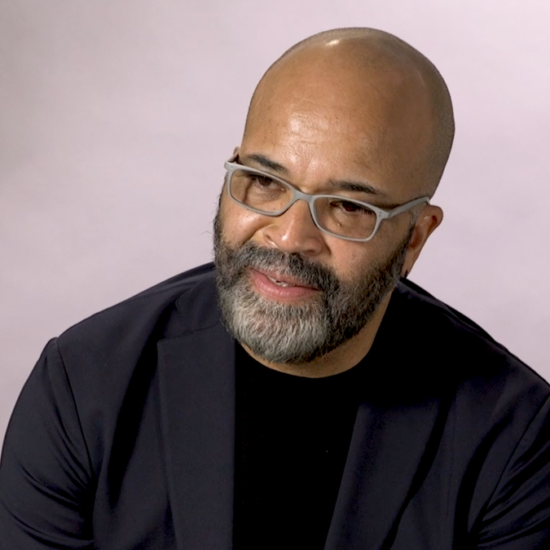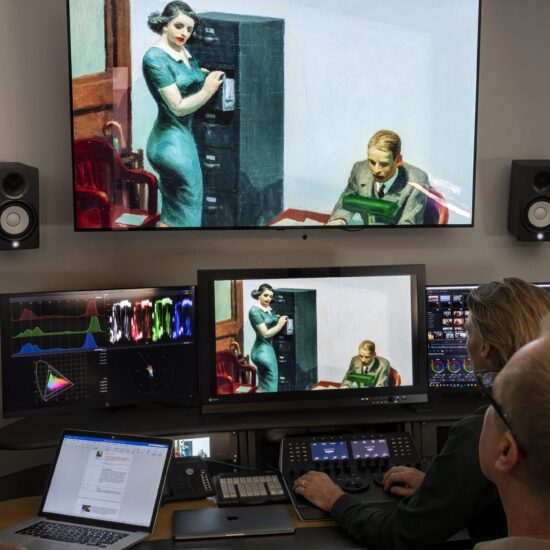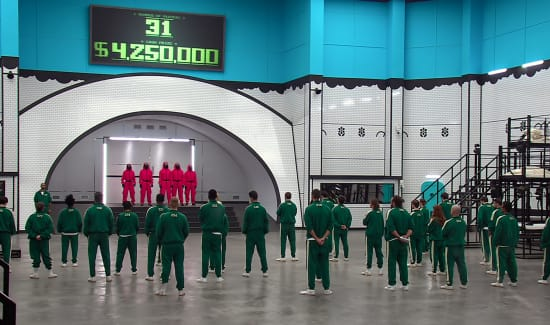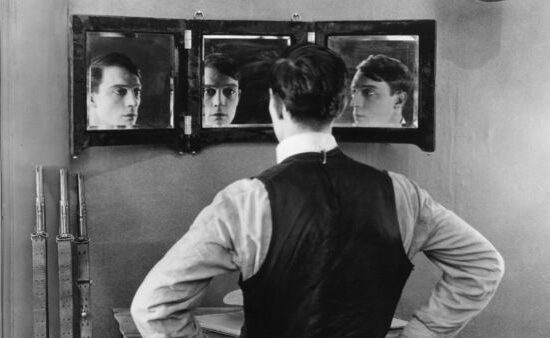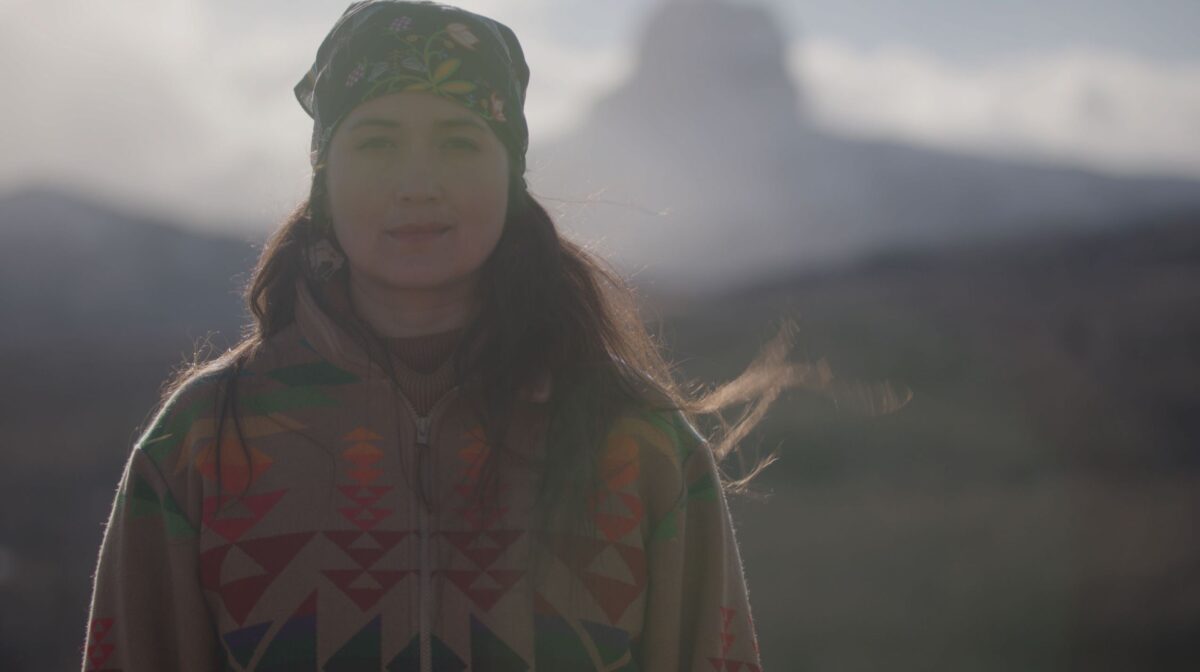
The other day online, I caught the coolest thing. It was a clip from the Cannes Film Festival, where Martin Scorsese and the cast of “Killers of the Flower Moon” get this big out-of-control standing ovation that goes something like nine minutes. One of those cast members is Lily Gladstone. She’s probably not the first Blackfeet to be at Cannes—everywhere I set foot, I hear of other Blackfeet that have been there before me—but Lily may be the first one of us to have been at the center of a nine-minute standing ovation.
I should say too that, while I know Lily enough to say hey, we didn’t grow up together in Browning or East Glacier on the reservation in Montana. She did, I didn’t. I’m from West Texas, where I also wasn’t the first Blackfeet. Another place I definitely wasn’t the first Blackfeet was the University of Montana, where I was just—breathe in to tumble through it—the James Welch Distinguished Native American Visiting Writer. And no way was James Welch the first Blackfeet in Missoula—we were there before Montana, before America—but he is how I first saw Lily Gladstone: in the excellent 2013 adaptation of his 1973 novel “Winter in the Blood,” which, at the time, felt kind of like where “Dance Me Outside” and “Pow-Wow Highway” and “Smoke Signals” and “Fast Runner” and all those Native films had been heading: stories that showed we were people, not just a disposable part of the setting in a film about “taming” the Wild West. We’d come a long way since 1922’s “Nanook of the North,” yes.
Kind of in a constellation around those films, too, there was stuff like “Thunderheart” and “Last of the Mohicans” and “The Indian in the Cupboard” and “Dances with Wolves”and “Apocalypto” and “Pathfinder” (2007) and “The New World” (2005) and Disney’s “Pocahontas,” where it was kind of cool to see Indian actors, hear some of the language, but . . . were those stories really about us? The documentaries more or less were—”Incident at Oglala,” “Reel Injun,” “500 Nations,” “Trudell,” so many more—and Tony Hillerman’s mysteries set on the Navajo Reservation were on PBS for the “Columbo” crowd, but . . . where were you going to catch any of that stuff?

A lot of coming-up Indian kids—okay, this coming-up Indian kid—we had maybe two and a half stations on an especially still day, and none of these films and documentaries, good or bad, were much happening yet in the late seventies, early eighties. All I had to reflect my face back at me in that small screen was the occasional Indian hitchhiker in “CHiPs,” or Billy Jack on some much-copied VHS tape. Yeah, sometimes there’d be a Saturday afternoon matinee with Burt Reynolds or Paul Newman in laughable redface, and all the John Wayne Indians were in constant rotation—that’s how America likes us: dying—and later I’d find Edward James Olmos playing an Indian in “Wolfen,” Armand Assante being an Indian eco-warrior in “Prophecy” (1979), Sonny Landham (yes!) as Billy Sole in the first “Predator,” and Lou Diamond Phillips telling me about the Sand Creek Massacre in “Young Guns,” but none of that was happening yet.
So, I did what you do: I abducted movie characters into my tribe.
Conan the Barbarian, that savage fighter from the frozen north? I could squint that “frozen north” into Montana, sure. And so Conan became, for me, Blackfeet. So did John McClane of “Die Hard.” It tracks: dude’s fighting impossible odds, he’s using guerrilla tactics, he’s getting beat up at every turn, and he’s joking his way through it all. That’s even more Blackfeet than Conan. John Rambo got pulled in as well, mostly because of that red bandana he Geronimos around his head when the chips are down. And, in those movies, the chips are always down—felt pretty familiar.
Until I found possibly better role models, these were plenty. And, sure, Elvis could be Indian, why not? Wayne Newton, too. And Robbie Robertson of The Band, I didn’t even have to squint to make him Native. He just was, and is. And that band Blackfoot? Never mind if they were Blackfeet or not. They were Indian, and that was enough. More than enough.
All of which is to say: growing up in West Texas, with the media landscape being what it was, I kind of cobbled my own tribe together to try to figure out who I was going to try to maybe be. It’s what you do.
Fast-forward to 2017, then. I’m at the cineplex for some superhero fodder, when . . . seriously? Someone’s speaking Blackfoot in “Wonder Woman”? Eugene Brave Rock, yep. Sure, he goes by what I always got called on work crews and day labor, “Chief,” but still, wow. I was used to my people being in the indies, the documentaries—in “War Party” (1988)—but never the headliner stuff that the whole world shows up for. I mean, “Wonder Woman” had a character in it who’d been in “Fast and the Furious”!
Had we made it? Was this it? What we’d been scrabbling and protesting for since forever?
Not sure I’d go quite that far. To most of the viewers, Chief isn’t the star of the movie. To this viewer he is, of course—and he’d kill it behind the wheel of one of those Fast cars—but so was “Predator” a movie about Billy Sole, so was “Young Guns” about this Indian who could really sling some knives at you, so was “White Buffalo” really a Crazy Horse story.

We’re getting somewhere, I guess I’m saying. We’re not the spooky ghost in “Scooby-Doo” anymore. “The Adventures of Pow-Wow” (1957) isn’t in syndication. Playing in redface, talking that Red English . . . it’s not so cool anymore. “The Lone Ranger” (2013) didn’t take up all the storytelling space, is what I’m saying. Or: we carved out some more space.
Check out your TV Guide if you don’t believe me. There’s “Reservation Dogs,” “Rutherford Falls,” “Mohawk Girls,” “Dark Winds,” “Spirit Rangers,” and on the big screen . . . well, we’re still usually sidekicks, supporting characters (“Wind River,” “Hostiles”).
But things are changing. Things are happening.
Or, I say “happening,” but what does it feel like we’re doing really?
Sneaking through.
Like, if they knew what we’re trying to do here, they’d for sure shut us down.
Until they do, though, there’s this lucky generation of Native kids, right?
I’m so thrilled for them.
Slouching through the living room, probably tracking mud across the carpet for the umpteenth time, they might look over to the television and see—
Their own face reflected back at them.
They won’t have to squint their heroes Indian. Their heroes will already be Indian.
I’m part of that audience at Cannes, clapping for Lily Gladstone.
And nine minutes isn’t going to be nearly enough.
Stephen Graham Jones
37,000 feet over Georgia
22 May 2023
Images from Lily Gladstone: Far Out There, directed by Brooke Pepion Swaney.










